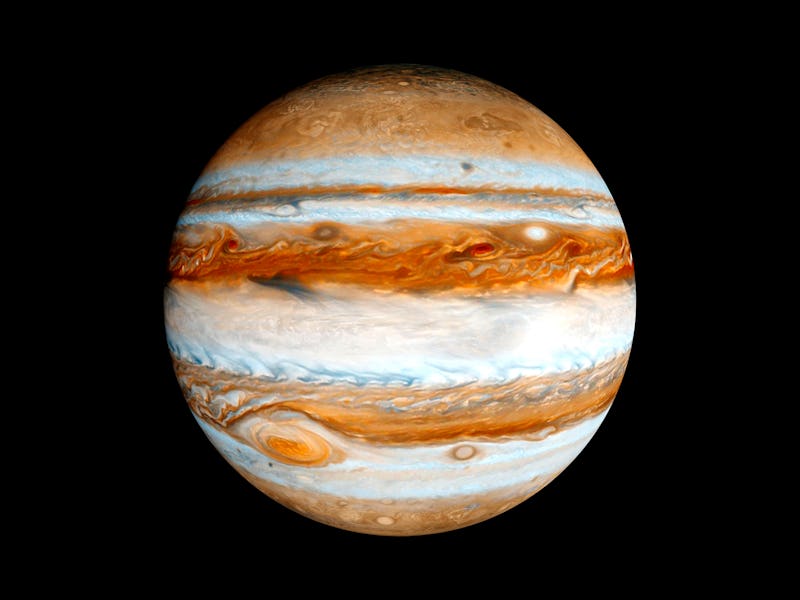Look: New NASA image shows what Jupiter looks like from the Moon
“It may not be the highest resolution ever, but it’s ours.”

The feeling of seeing Jupiter through your own telescope can give you the chills — as it does for me. Then just think how the team for the Lunar Reconnaissance Orbiter felt when they turned their spacecraft around — yes, the orbiter that’s been faithfully circling and looking down at the Moon since 2008 — and saw the giant planet, Jupiter, with their camera.
If you zoom in on the picture, you can even see Jupiter’s Galilean moons.
Usually, LRO takes stunning, high-resolution images of the lunar surface, including being able to spot details of the Apollo landing sites.
LROC’s look at the Apollo 11 Landing Site.
But recently, the LRO team used some high-powered calculations and precise timing to use its Lunar Reconnaissance Orbiter Camera (LROC) to scan the area of the sky where Jupiter was going to be, about 600 million km away. They hit the jackpot.
While it’s not Hubble Space Telescope quality, the fact this image was taken from a spacecraft orbiting 100 kilometers above the lunar surface is a true feat in engineering.
“We took a pic of Jupiter from the Moon last month,” said LRO team member Brett Denevi on Twitter.
“It may not be the highest resolution ever, but it’s ours.”
Jupiter, as seen by a telescope 100 kilometers above the Moon.
Denevi explains on the LRO website that the exercise to take a picture of Jupiter was a labor of love. The team does these complicated maneuvers because they love exploring the planets and taking pictures.
“It is fun to take a look around our Solar System every once in a while from our perch in lunar orbit,” Denevi says.
Complicating matters is that because the spacecraft is over 12 years old, a few things don’t work like they used to. The Inertial Measurement Unit (IMU) — which keeps tabs on where LRO is pointed — is nearing the end of its operational life. The IMU is now only used in emergencies or special situations. LRO’s team now has to use the spacecraft’s star tracker cameras to derive an estimate of its location and rotation.
LRO’s view of Jupiter, with an alternate crop and a higher contrast stretch so that Ganymede and Callisto are visible. Io and Europa can be seen appearing to protrude from the side of Jupiter; in reality, they are both just off Jupiter’s limb but they have all merged together here due to the stretch applied to the scene.
This “adds complications to imaging anywhere but straight down at the lunar surface,” Denevi writes. Adding:
“(We don’t want the star trackers pointed at the Moon rather than the stars!). The spacecraft is also gracefully aging so the solar panels must be turned away from the Sun for as little time as possible. And then adding in other thermal and timing constraints, the operations team had to work hard to find just the right time to turn the spacecraft toward the outer Solar System and scan across Jupiter to get this image.”
Surprisingly, this isn’t the first time LROC has taken a picture of Jupiter — they did another shot in 2020. And every once in a while, LRO turns its view outward to take a peek at other places in the Solar System, like Mars and even Earth.
“But just like so many people around the world who like turning their telescopes toward the sky and seeing the stars and planets firsthand, the LROC team could not resist doing the same,” Denevi says.
This article was originally published on Universe Today by Nancy Atkinson. Read the original article here.
This article was originally published on